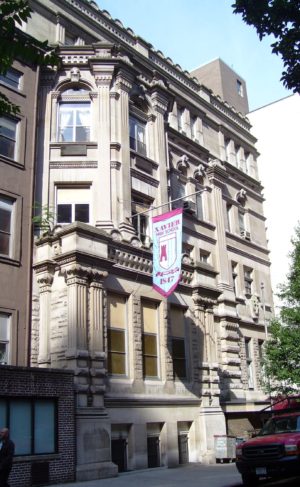My memoir of the final days of Xavier High School as, in the words of Antonin Scalia, “a thoroughly military academy” has expanded a bit thanks to one of my classmates making a contribution. In terms of the narrative it fits in here. We are in late 1967, early 1968. Dave Posteraro, now an intellectual property attorney, was in the Classics Honors program, so we had all the same classes, except for modern language. That naturally included Military Science mostly with Sergeant Daley that year.
Dave expands here on a an incident that I only brushed on in the last post. I think it illustrates the way that growing anit-war sentiment was seeping into the school.
_______________________________________________________________________________
I have no specific memory of the incident you recount concerning me but when I read what you had written I knew instinctively that it had to be true. How I specifically reacted to the Sergeant’s suggestion that an incendiary weapon would be good for “destroying a thatched hut” is lost to me. I would be interested, and I hope more amused than embarrassed, if you can share any detail. The truth of it, however, I don’t doubt.
Francine du Plexis Gray (didn’t see that coming, did you?) was born in Poland in 1930, raised in Paris, and with her mother escaped the Nazis and emigrated to the United States in 1940. She married the painter Cleve Gray and worked as an editor and staff writer at the New Yorker under Robert Gottleib. She was also my father’s patient.
In 1967, the same time Ms. Gray was working at the New Yorker, another young staff writer at that magazine published a series of articles about the attack on, and destruction of, a village in Vietnam by American forces. These articles were eventually published by Knopf as “The Village of Ben Suc”. Ms. Gray had given a copy of the book to my father and I vividly remember when he brought it home. It was a small orange covered book, which he gave to me as I was the most voracious reader of his three sons (and son of Xavier). My father enjoyed talking politics and I can imagine that he and his patient had some conversation about Vietnam at the time. My Dad was (gasp) a Republican but to his credit he was a Javits Republican and initially supported the war. He eventually became a strong opponent and when, several years later, it was my turn to be up for the draft, told me that if I wanted to go to Canada he would support me. My number was 254 so we never had to make that decision.
Sometime in 1967, more than a year before the My Lai massacre, I had read about the atrocities of American aggression in Vietnam in “The Village of Ben Suc” and the book had shaped my thoughts on that the ethics (and efficacy) of incendiary bombs and thatched huts.
So a Nazi refugee with a periodontal condition gave a book to her dentist who in turn gave it to his son, a high school student at a military prep(ish) school in Manhattan, who was outraged by what he read and reacted (in some lost in memory way) to the suggestion by his military instructor about burning a thatched hut.
_______________________________________________________________________
So Dave has added another book to my Kindle backlog. The destruction of Ben Suc was part of Operation Cedar Falls
The aim of this massive search and destroy operation was to eradicate the so-called “Iron Triangle”, an area located in close proximity to Saigon which had become a major stronghold of the communist National Liberation Front (NLF) or Viet Cong. The operation began on January 8, 1967, and ended on January 28, 1967.
The type of strategy that it represents is probably as old as war – denying the enemy his base of support. Sherman practiced it in Georgia and Sheridan in the Shenandoah. And they went on to use it against the Plains Indians. When Sheridan visited with Germans during the Franco- Prussian war, he advised his host that in order to solve the problem of the Franc-tieurs, the Prussian troops needed to leave the people with only their eyes to cry with. Of course those of us with a classics background, will probably think of Cicero and “Carthago delenda est”.
In case you didn’t get the reference in the title here it is.
___________________________________________________________________________
Peter J Reilly who hopes to become the Tom Sawyer of blogging greatly appreciates contributions.































































































